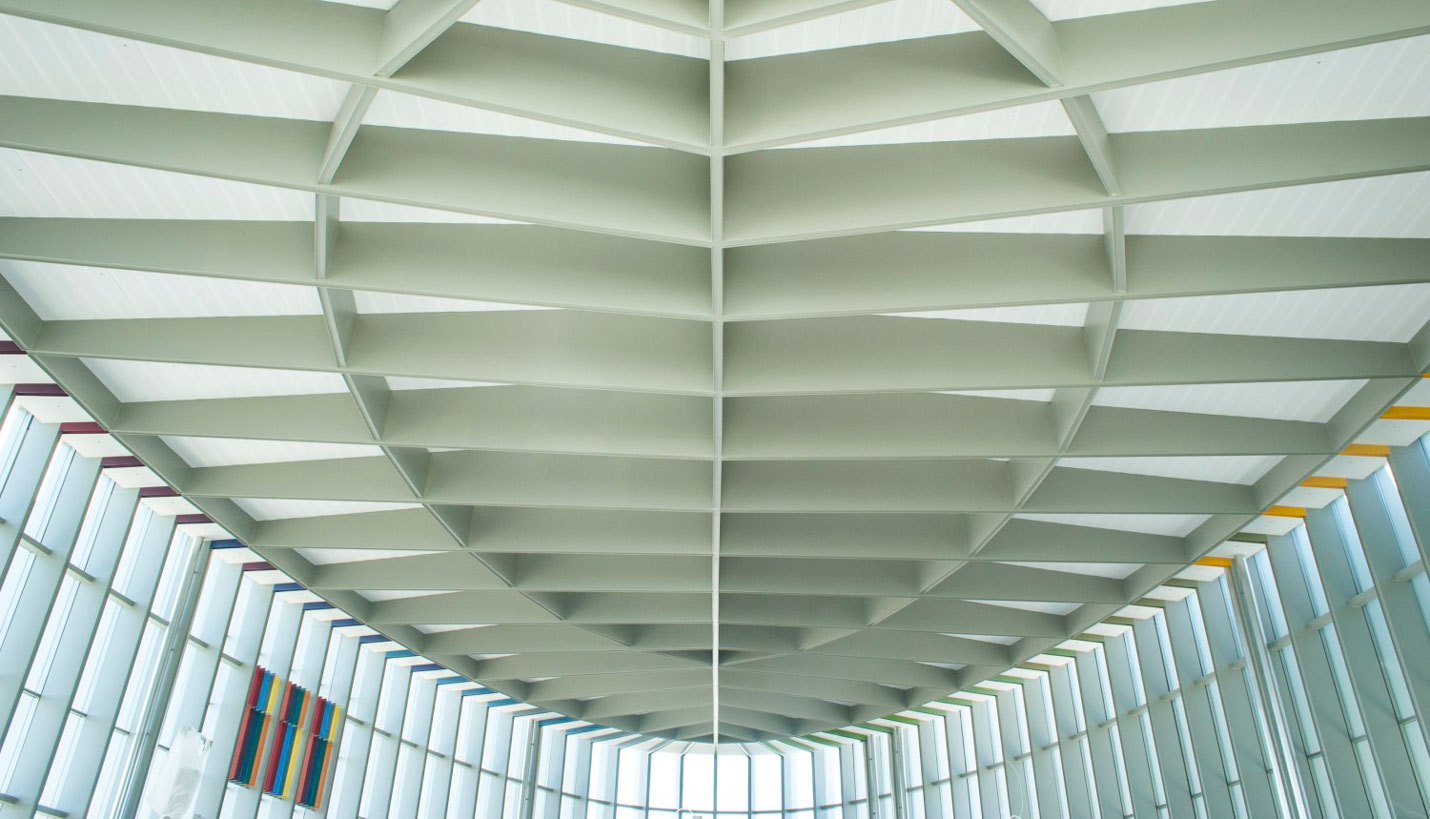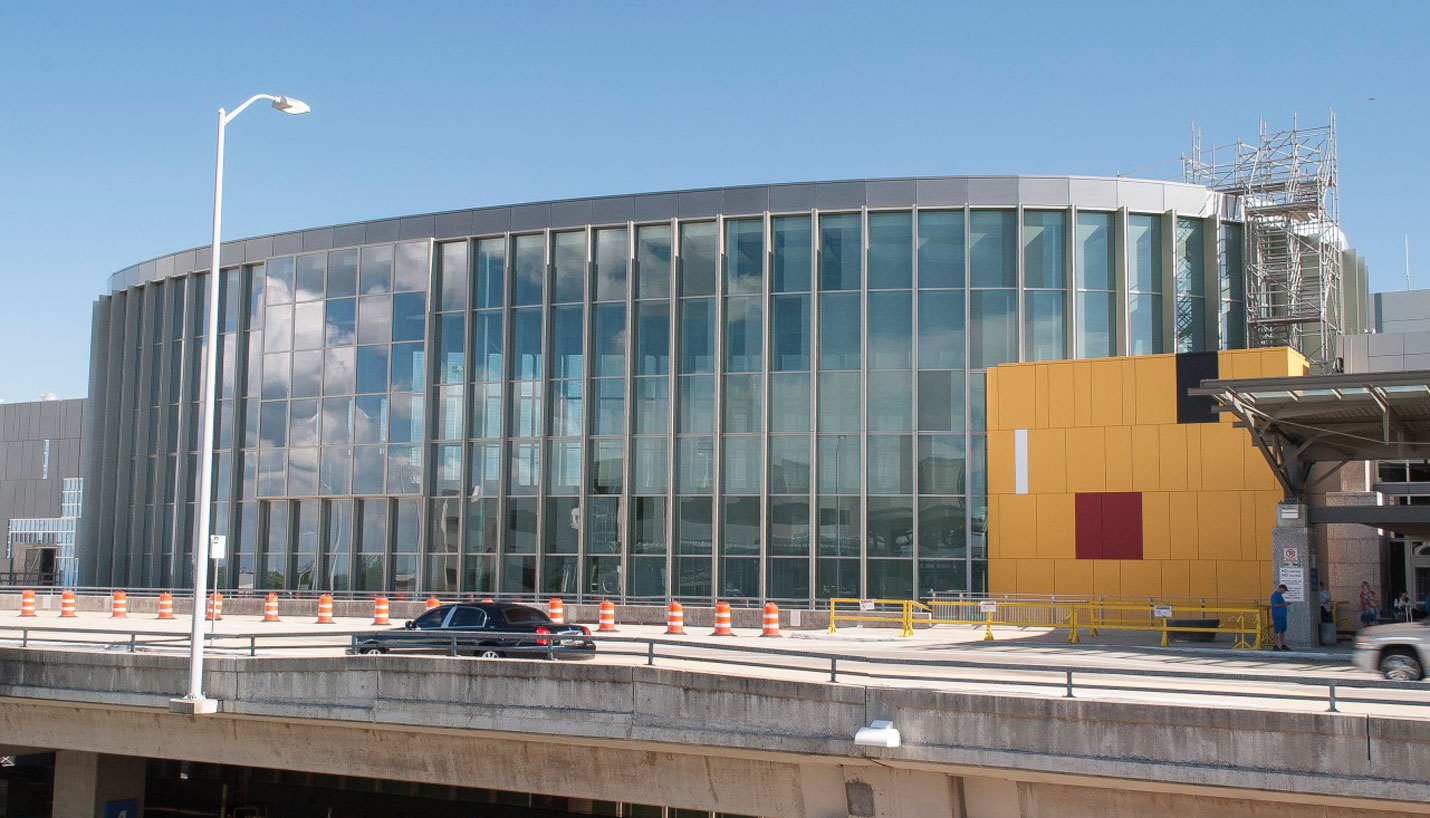Looking Skyward
Austin-Bergstrom International Airport's (ABIA) Terminal East Infill (TEI), a 55,000 sq. ft terminal expansion and the renovation of 17,000 sq. ft of existing space, was planned to accommodate the airport’s projected growth of passengers. The construction of the TEI was a successful project not only to help with expected passenger growth, but it was also “a testament to the successful union of structure and architecture,” as stated in the most recent issue of Modern Steel Magazine.
The design-build team collaborated on creating a unique and efficient space that reflects the city’s lively culture, while developing a seamless transition into the existing terminal. The team was led by the Hensel-Phelps Construction Company (HPCC). Page is the architect of record and Architectural Engineers Collaborative (AEC) provided structural engineering services.
The challenging location and the results of an efficiency study led to an oval-shape design for the $62 million project. An elaborate “two-way” roof system was used to accomplish the notable roof structure that lacked the traditional bolted connections seen in long-span trusses or nodes. The project features distinct exposed steel structural components as an expansion of the construction in the existing terminal, which is also lined with exposed steel pipe trusses and glass curtain walls.
The team designed the project to create smooth passenger flow between the existing facility and the new terminal. The three main floors of the TEI project align and link both of the spaces, and it was essential that the grand hall, a key component of the design, was free of interior columns. The lack of columns were necessary in order to facilitate passenger queuing, preserve sightlines for TSA security requirements and reinforce the connection between the new and existing terminals, while enhancing the aesthetic of the high roof.
This is the second ABIA project for Page; the firm was architect of record since the airport opened in 1999. We provided architecture, interiors and mechanical and electrical engineering for the original Barbara Jordan terminal. The airport has experienced passenger growth since 2010 and served more than 10.7 million passengers in 2014.
You can read the full article on page 28 of Modern Steel Magazine.
Contributed By
Joel Blok and Richard Liu, Modern Steel Magazine
09/01/2015
People
- Paul A. Bielamowicz
- Robert E. Burke
- Mika England
- Randy R. Gaines
- Chad R. Garven
- Michael W. Henry, Jr.
- Shawn-Marie Henson
- Robert L. Hill, Jr.
- Joel A. Holder
- Chad R. Johnson
- Denny Kumm
- Matthew Z. Leach
- Megan McCoy
- Freddy Padilla
- George E. Reeves, III
- Diane Rincon
- Rosalyn Rojmar
- Jerald L. Segner
- Lawrence W. Speck
- Ricardo A. Trevino
- Randy C. Twedt
Related Posts
- In The Round: ABIA Airport in Texas Architect Magazine
- Page Aviation Project Wins National Design-Build Award
- Austin-Bergstrom International (ABIA): Planning the Airport of the Future
- ABIA Receives National Award
- It's A "Steel" Of An Award For ABIA Terminal East Infill
- Winners of Commercial Real Estate Awards
- Honored Again at the SARA Awards













